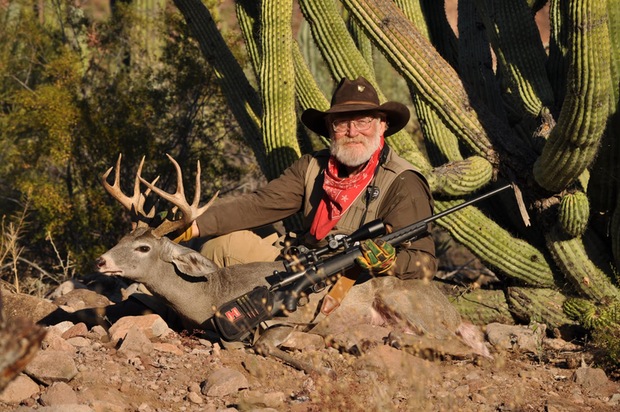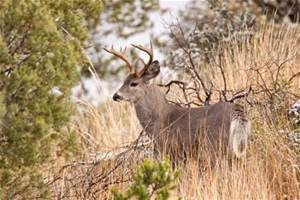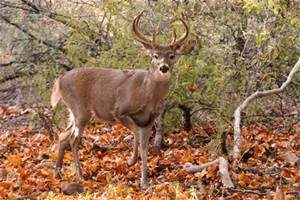Whitetail deer habitat is usually punctuated with corn, soybeans, tall oaks, or pine plantations, yet one of the coolest subspecies of whitetail deer hangs out south of the Grand Canyon. Coues deer are similar to Virginia whitetails in many ways, except size. Typically, this native of Arizona, New Mexico and Mexico is smaller and a tad more elusive than its larger cousins.
As the above photo with Larry Weishuhn shows, Coues thrive in very harsh conditions. They frequent rugged mountains, desert canyons, and remote terrain. In such desolate areas, populations are modest and finding a mature buck may take days of searching and hours of glassing. Hunting coues whitetails is much like sheep hunting and guides and hunters frequently use spotting scopes and powerful 12-16-power binoculars. Once spotted, a careful stalk or long range shot helps seal the deal.
Spot and stalk is the most common tactic for this Southwestern deer, yet I’ve had experienced archers discuss traditional tactics such as tree stands and rattling. The trick is to find a travel corridor or bottleneck that restricts travel and helps funnel deer movement toward your stand. Likewise, during the rut, bucks will respond to rattling which can be effect for rifle or bow hunters.
Weishuhn is one of the most experienced and knowledgeable whitetail hunters in the country and his words describe this unique quest in great detail:
For the past nearly three hours I had sat behind a spotting scope taking apart two opposite slopes high in the mountains of Sonora, Mexico. I gridded each exposure and had carefully looked for anything that might betray a Coues deer’s presence; a flicked ear, “shine” off of a deer’s sleek body, a glint off of antler or moist nose, or even a shadow against a rock or big cactus. I had spotted seventeen desert bighorn sheep, ewes and lambs. All were below me. Some were bedded, some were up feeding.
What had lured me to hand over hand my way up to the pinnacle between the two rock, cactus, and chaparral covered ridges was a very brief look at a big five by five Coues whitetail buck. I had watched him bed just below a house sized boulder on the ridge to my left. What I had seen of him, he was possibly a candidate for the Boone & Crockett record book. … [continued]









![The Best Deer Camp Chili [VIDEO] Deer Chili Ingredients, Tomatoes, Chili Spices](/wp-content/uploads/2015/10/Deer-Chili-Deer-Camp-Recipe-218x150.jpg)








![How to Call Elk Early in the Season [VIDEO]](/wp-content/uploads/2016/08/byers003-218x150.jpg)






![Idiots Disturb Hunter: How Would You Have Handled It? [VIDEO]](/wp-content/uploads/2015/10/DSC00110-e1474487693878-100x70.jpg)
![Albino Buck Shocked to Shed His Antlers [VIDEO]](/wp-content/uploads/2015/10/AlbinoDeer-100x70.jpg)